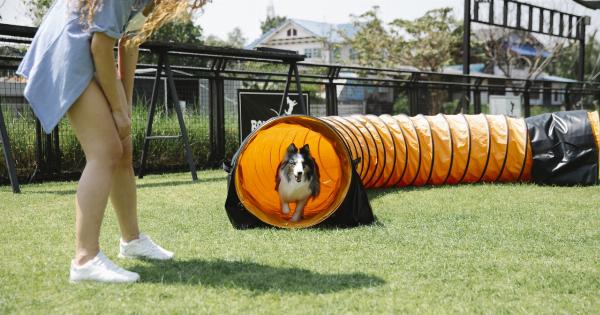Walking your dog is not just a routine task, but an essential activity that contributes to their overall health and well-being. Dogs, by nature, are active animals that require regular exercise to stay healthy and happy.
In this article, we will delve deeper into the reasons why walking your dog is crucial for their physical and mental health.
Benefits of Walking for Dogs
Regular walks provide numerous benefits for dogs, both physically and mentally. Let’s explore some of the key advantages:.
1. Physical Exercise
Walking is a fundamental form of exercise for dogs. It helps them burn off excess calories, maintain a healthy weight, and improve cardiovascular fitness.
Just like humans, dogs that engage in regular physical activity are less likely to suffer from obesity, heart diseases, and other weight-related issues.
2. Mental Stimulation
Walking not only exercises a dog’s muscles but also provides mental stimulation. Being exposed to different sights, sounds, and smells during a walk engages their senses and keeps their mind active.
This mental stimulation can help prevent boredom and destructive behaviors caused by a lack of mental stimulation.
3. Socialization Opportunities
Regular walks offer excellent opportunities for dogs to socialize with other canines and humans. Meeting other dogs allows them to practice their social skills, learn appropriate behavior, and develop better communication abilities.
It also helps reduce fear or aggression towards unfamiliar animals or people.
4. Bonding Time
Walking together is a great bonding experience for dogs and their owners. Spending quality time exploring the outdoors and engaging in physical activity strengthens the bond between a dog and its owner.
It is an opportunity for mutual trust, companionship, and understanding to flourish.
5. Behavior Management
Regular walking often leads to improved behavior in dogs. The physical and mental stimulation provided by walks can help alleviate behavioral issues such as excessive barking, chewing, or digging.
Dogs that are adequately exercised are generally calmer and better behaved both inside and outside the house.
6. Weight Control
Walking plays a significant role in maintaining a healthy weight for dogs. Obesity in dogs can lead to a multitude of health problems such as joint pain, diabetes, and even reduced lifespan.
Going for walks helps them burn calories and prevents excessive weight gain, keeping their overall health in check.
7. Routine and Structure
Dogs thrive on routine and structure. Regular walks provide a sense of predictability and stability in their daily lives. Having a consistent walking schedule helps dogs feel secure and fulfilled, reducing anxiety and stress levels.
8. Overall Health Improvement
The benefits of walking extend beyond just physical fitness. Regular exercise helps boost a dog’s immune system, improves digestion, strengthens muscles and bones, and enhances overall vitality.
It also reduces the risk of various health issues, including certain types of cancer and gastrointestinal problems.
9. Longevity
The combination of physical exercise, mental stimulation, behavior management, and improved overall health derived from regular walks can significantly contribute to a dog’s longevity.
A healthy and active lifestyle helps extend their lifespan by minimizing the chances of developing major health complications.
10. Happiness and Quality of Life
Perhaps the most essential benefit of all, walking your dog ensures their happiness and enhances their quality of life.
Dogs are inherently active animals, and walking allows them to release pent-up energy, explore their surroundings, and experience the joy of being outdoors. It provides them with a sense of fulfillment and contentment.
Conclusion
Incorporating regular walks into your dog’s routine is vital for their overall health, happiness, and well-being.
It not only improves their physical fitness but also provides mental stimulation, socialization opportunities, and strengthens the bond between a dog and its owner. Remember to tailor the duration and intensity of the walks according to your dog’s age, breed, and individual needs. So, put on that leash, lace up your shoes, and embark on a journey of good health and happiness with your furry companion!.































